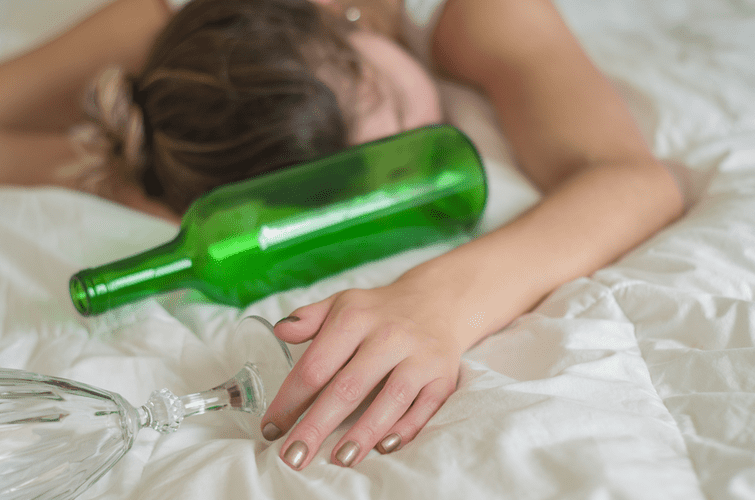FDA is not aware of any evidence that would call into question these conclusions. Interested parties may present the agency with any evidence that they think has bearing on this issue. Our continuing review of information that has been submitted thus far has not caused us to change our conclusions.
Potential interactions
It may also offer sleep benefits to patients with multiple sclerosis, Parkinson’s disease and Huntington’s disease. Cannabis pollination can also stunt the growth of female plants, which is problematic if you’re cultivating the plant for fibers. George Washington made the mistake of allowing his hemp crop to undergo pollination, and it ruined his harvest. Akin to dopamine and serotonin, endocannabinoids can operate like neurotransmitters — the chemical messengers that activate or switch off our nerves. That, in turn, sparks or dampens the electric pulses that create our thoughts, behaviors and movements. The first thing you need to know is that our bodies make their own natural versions of these compounds called endocannabinoids.
Get the best in health and wellness
All of this is important for CBD sellers and consumers because the FDA has a mandate to verify the safest dosage for the chemicals that we consume or apply to our bodies — whether they be applied to drugs, food and dietary supplements — under the Food, Drug and Cosmetic Act. The U.S. Food and Drug Administration (FDA) approved Epidiolex, a medicine that contains purified CBD from hemp, to help treat rare seizure disorders. The FDA has concluded that this drug is safe and effective for this intended use.
States Where CBD from Marijuana is Banned (Regardless of the Purpose)
The lack of clarity in the regulations governing veterinary hemp food supplements allows for products of questionable quality to flood the market,[63][64] which may pose a risk to the wellbeing of pets and owners. Hemp could is cannabidiol addictive be cultivated lawfully in all states, independent of a pilot program, if The Hemp Farming Act of 2018, S. Currently, domestically cultivated hemp is only federally lawful when cultivated under such a pilot program.

- The United States Food & Drug Administration (FDA) has not approved the cannabis plant itself for medical use.
- That behavior, and the realities of federal law, have led to a series of cease and desist letters from the FDA to producers shipping products across state lines.
- Given the above precedents, it’s possible that the FDA will impose restrictions on the classification of products infused with isolated CBD but not hemp extracts that contain naturally occurring levels of cannabidiol.
- Forbes Health covers CBD and cannabis products in accordance with FTC guidelines.
- Third, the grassroots interest in this issue was growing in Kentucky, and McConnell knows that his role as Senate Majority Leader hangs in the balance in 2020, as does his Senate seat as he faces re-election that same year.
There are still a lot of misconceptions floating around regarding the legal status of CBD in the United States. All parts of the plant Cannabis sativa L., whether growing or not; the seeds thereof; the resin extracted from any part of such plant; and every compound, manufacture, salt, derivative, mixture, or preparation of such plant, its seeds or resin. A spokesperson for the Drug Enforcement https://ecosoberhouse.com/ Administration told the PBS NewsHour that their agency would have a limited role with these infractions. Since the Farm Bill said CBD with less than 0.3 percent THC was no longer a banned substance, it’s no longer under DEA’s purview, a spokesperson said in an email. Cheer said there is also strong support that CBD reduces anxiety and stymies addiction to opioids and marijuana.
Get the latest in health news delivered to your inbox!
- In addition, they have not been evaluated by the FDA to determine what the proper dosage is, how they could interact with other drugs or foods, or whether they have dangerous side effects or other safety concerns.
- Under the FD&C Act, any product intended to diagnose, cure, mitigate, treat or prevent a disease, and any product (other than a food) that is intended to affect the structure or function of the body of humans or animals, is a drug.
- Most citizens can access the supplement in-store legally but may be hard-pressed to find it in some of the stricter states requiring medical cards.
- The FDA can officially go after any companies selling or marketing items that make health claims about CBD, especially if those products involve interstate trade of the cannabis extract.
Information about these requirements, and about FDA requirements across all product areas, can be found on FDA’s website. FDA is not aware of any evidence that would call into question its current conclusions that THC and CBD products are excluded from the dietary supplement definition under section 201(ff)(3)(B) of the FD&C Act. Don’t be misled; marijuana is not a deadly drug — but the laws haven’t changed on a federal level in 80 years.
Cannabis – New York State Department of Health
Cannabis.
Posted: Fri, 22 Mar 2024 18:45:52 GMT [source]
Legality of cannabis by U.S. jurisdiction
How Can CBD Affect Your Health?
- In that case, the HIA challenged a proposed DEA Rule that would have placed THC on Schedule I, alongside marijuana.
- The allowed pilot programs to study hemp (often labeled “industrial hemp”) that were approved by both the U.S.
- It’s used to regulate the stress response, promote sleep, regulate metabolism, and even reduce the transmission of pain signals headed to the brain.
- If your supplier does it incorrectly, your CBD bottle might carry an illegal dose of THC.
- It is important to consult with a healthcare provider before use, especially if you are taking other medications.
- Specifically, the warning letters address the illegal marketing of unapproved drugs labeled as containing CBD.






